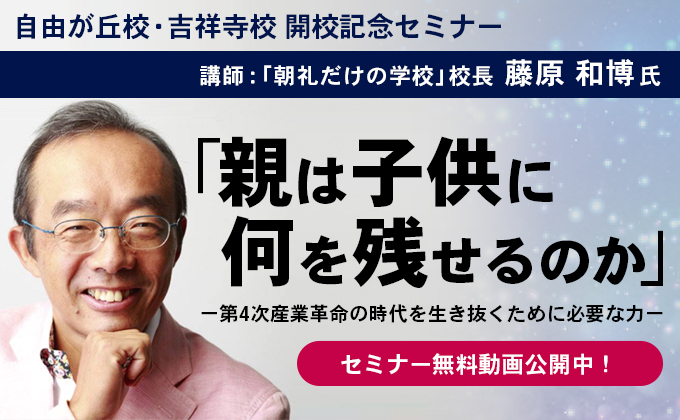What is next-generation education that develops new skills required in 2030?
Let’s foster talents with specialties in math, science and fine art.
Based on investigations by Nomura Research Institute in 2015, there is a high likelihood that jobs engaged in by 49% of the current working population would be replaced by AI or robots in the next 10 to 20 years.
Characteristics of people that are desired by society have been changing due to evolutions within the realms of science and technology. We are facing shortages of engineers (people skilled in math and science) and designers (people skilled fine art), and there is increasing momentum to foster talent in math, science and fine art.

"White collar workers will be replaced by AI or robots in the next 10 to 20 years. "Nomura Research Institute 2015
Evolution from white collar workers to knowledge workers.
Most routine work in which white collar workers are now engaged in developed nations are being taken over by workers in Asian countries where labor costs are cheaper. Therefore, white collar workers need to evolve into “knowledge workers” and develop new skills.
In the not so distant past, many blue collar jobs were replaced by robots. White collar workers are gradually being affected by the same phenomenon. We are fast approaching an era where white collar jobs could become obsolete unless workers learn skills that cannot be replaced by computers.

"Evolution from "left-brain thinking" to "right-brain thinking," by Daniel H. Pink, a speech writer of former Vice President Al Gore.
Characteristics of right-brain thinking that are driving the new era
Left-brain skills that led "the Information technology era" from the past decades are still necessary today, but that is no longer enough to succeed. Specialties in "right-brain" skills such as creativity, empathy, joy and significance will also be key elements in the future.
Abilities driving in the new era are generated primarily through these right-brain skills. The two skills most necessary for right-brain thinking are "high-concept" and "high-touch."
High-concept(general creativity)
- Ability to find regularity.
- Ability to find an opportunity.
- Ability to generate beauty that is both artistic and appealing to people’s emotions
- Ability to convince people.
- Ability to combine seemingly disparate concepts to create something new.
High touch(communication skills)
- Ability to create a new framework or a new concept by putting together disparate concepts on the surface.
- Ability to sense subtleties in human relationships.
- Ability to create artistic and emotional beauty.
- Ability to find joy and help others find joy.
- Ability to pursue the purpose and significance of everyday events.
Creativity cultivated from failures
What is needed for children living in the AI era is an accurate learning method. Through repeated trial and error, “creative thinking” is nurtured and ideas are generated while one finds answers based on one’s own mistakes,.
Repeating trial and error, or “failure”, is the essence in STEAM learning. In a world where each person gives a different answer, making and learning from many mistakes is critical in order to succeed in the future.
The more failures that children experience at an early age, the more chance they have to challenge themselves and grow. After that, the more challenges children face, the more success they can achieve.
Children nurture non-cognitive skills such as “making efforts toward a goal,” “building good relationships with other people” and “controlling self-emotion” by experiencing many failures in their youth, which can be cultivated into an enjoyment of failure by working towards future success.
In addition, although logical thinking skills are developed by building things in an orderly fashion, such as through coding, with ”Play! Genius programming school” we shift the focus to “sense” and “sensitivity,” which can help decide how to express the best outcomes.
Human creativity is generally expressed through “art”, which involves the ability to conceive of what doesn’t exist now, and then to create it. Our 21st century learning program provides children with opportunities to learn art and develop their sensitivity through working together.



